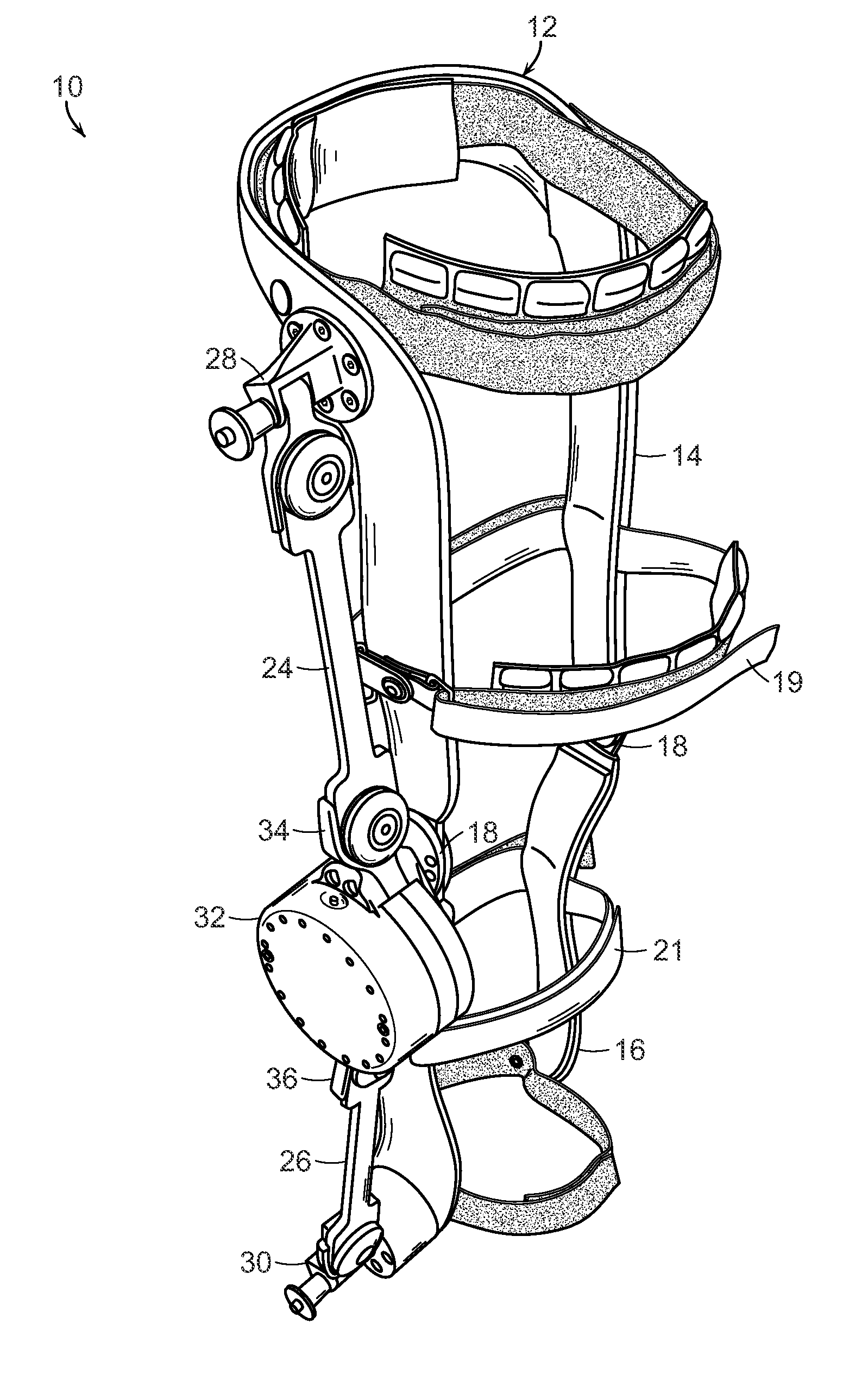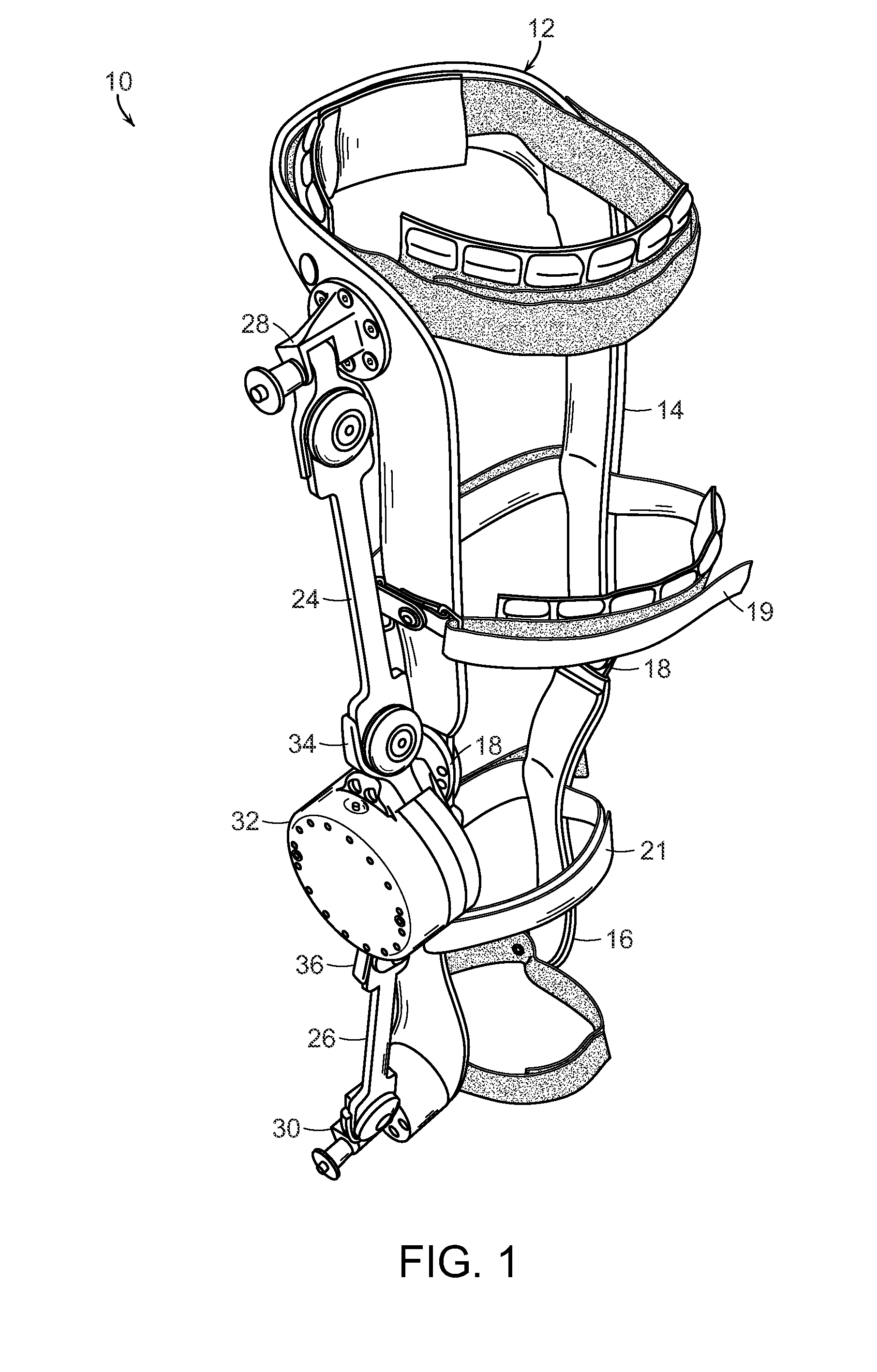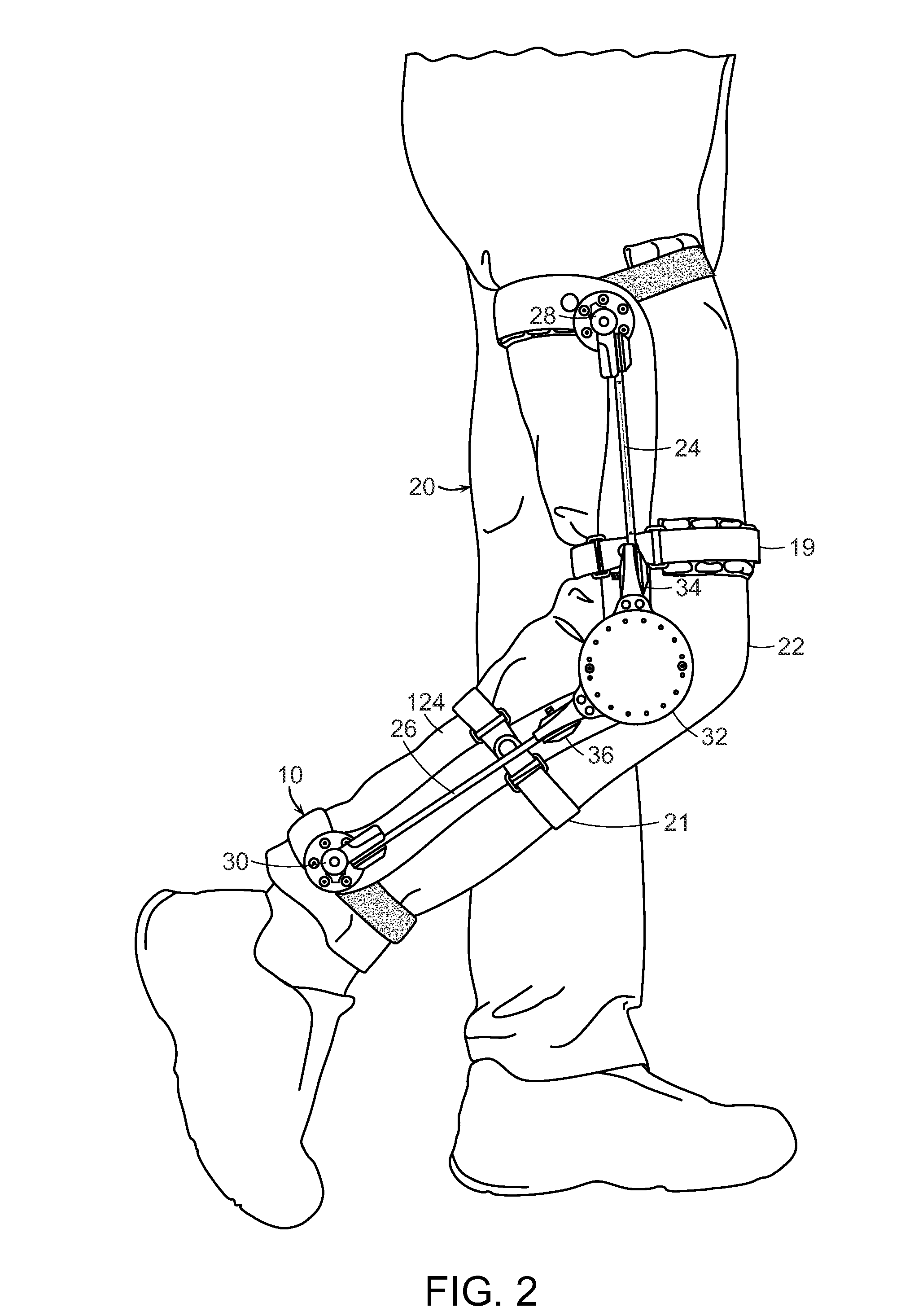Elastic Element Exoskeleton and Method of Using Same
- Summary
- Abstract
- Description
- Claims
- Application Information
AI Technical Summary
Benefits of technology
Problems solved by technology
Method used
Image
Examples
Embodiment Construction
[0040]The invention generally is directed to a method for augmenting running in a mammal, such as a human, and to a clutched elastic element exoskeleton that can employ the method of the invention.
[0041]The method for augmenting running in a mammal and the clutched elastic exoskeleton of the invention can apply relatively high torque with high resolution to a joint of the mammal during running while employing relatively low mass, thereby overcoming the problems associated with the relatively high mass of active devices and the delayed reaction time of passive devices. Further, the method and apparatus of the invention do not depend upon any particular configuration of attachment to the mammal subject, and accommodate changes in stride and transitions between walking and running, inclines and declines of surfaces, and ascent and descent of stairs.
[0042]One particular embodiment of a clutched elastic element exoskeleton is shown in FIGS. 1-3. As shown therein, exoskeleton 10 includes ...
PUM
 Login to View More
Login to View More Abstract
Description
Claims
Application Information
 Login to View More
Login to View More - R&D
- Intellectual Property
- Life Sciences
- Materials
- Tech Scout
- Unparalleled Data Quality
- Higher Quality Content
- 60% Fewer Hallucinations
Browse by: Latest US Patents, China's latest patents, Technical Efficacy Thesaurus, Application Domain, Technology Topic, Popular Technical Reports.
© 2025 PatSnap. All rights reserved.Legal|Privacy policy|Modern Slavery Act Transparency Statement|Sitemap|About US| Contact US: help@patsnap.com



